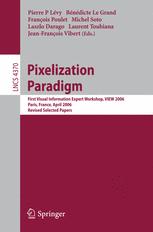

Most ebook files are in PDF format, so you can easily read them using various software such as Foxit Reader or directly on the Google Chrome browser.
Some ebook files are released by publishers in other formats such as .awz, .mobi, .epub, .fb2, etc. You may need to install specific software to read these formats on mobile/PC, such as Calibre.
Please read the tutorial at this link: https://ebookbell.com/faq
We offer FREE conversion to the popular formats you request; however, this may take some time. Therefore, right after payment, please email us, and we will try to provide the service as quickly as possible.
For some exceptional file formats or broken links (if any), please refrain from opening any disputes. Instead, email us first, and we will try to assist within a maximum of 6 hours.
EbookBell Team

5.0
40 reviewsThe pixelization paradigm states as a postulate that pixelization methods are rich and are worth exploring as far as possible. In fact, we think that the strength of these methods lies in their simplicity, in their high-density way of information representation property and in their compatibility with neurocognitive processes. • Simplicity, because pixelization belongs to two-dimensional information visualization methods and its main idea is identifying a “pixel” with an informational entity in order to translate a set of informational entities into an image. • High-density way of information representation property, firstly because pixelization representation contains a third dimension—each pixel’s color—and secondly because pixelization is a “compact” (two-dimensional) way of representing information compared with linear one-dimensional representations (Ganascia, p.255) . • Compatibility with neurocognitive processes, firstly because we are thr- dimensional beings and thus we are intrinsically better at grasping one- or two-dimensional data, and secondly because the cerebral cortex is typically a bi-dimensional structure where metaphorically the neurons can be assimilated to “pixels,” whose activity plays the role of color (Lévy, p.3). The pixelization paradigm may be studied along two related directions: pixelization and its implementation and pixelization and cognition. The first direction—pixelization and its implementation—may be divided into two parts: pixelization theory and pixelization application.